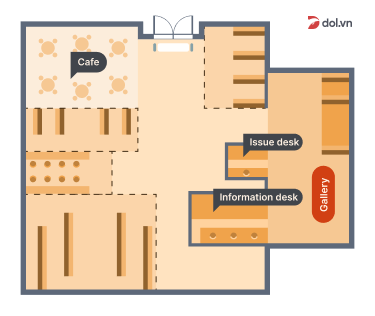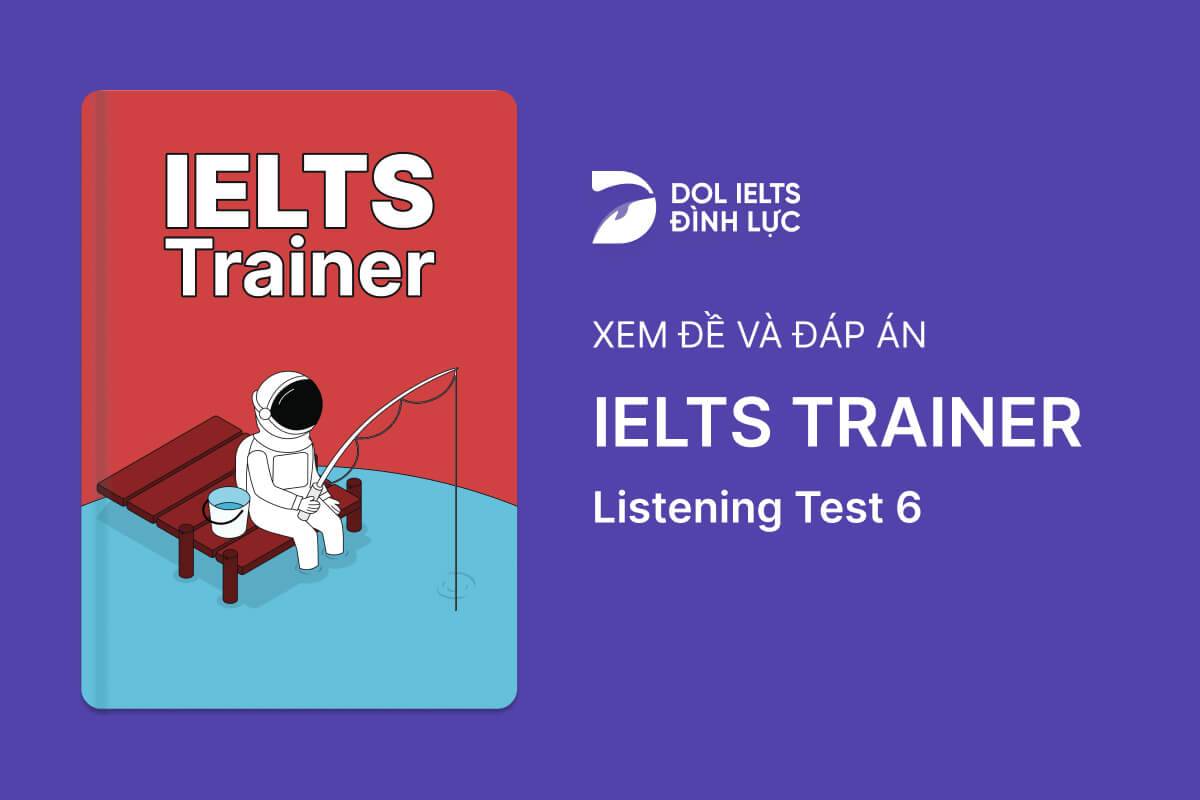IELTS Trainer - Listening Test 6 With Practice Test, Answers And Explanation
Luyện tập đề IELTS Online Test IELTS Trainer - Listening Test 6 được lấy từ cuốn sách IELTS Trainer với trải nghiệm thi IELTS trên máy và giải thích đáp án chi tiết bằng Linearthinking, kèm answer key và list từ vựng IELTS cần học trong bài đọc.
Section
👂️ Bài nghe section 1
❓ Tapescript section 1
🔥 Đáp án & giải thích section 1
Giải thích chi tiết
 Mình cần nghe về giá phòng của nhà nghỉ dành cho thành viên ($50 per night but only $ ... for members)
Mình cần nghe về giá phòng của nhà nghỉ dành cho thành viên ($50 per night but only $ ... for members)
=> Đáp án sẽ có sau ''I need to know how much it costs.''
 Đầu tiên, ''The price is under $30 for a bed in a dormitory but they'll be paying $50 a night.''
Đầu tiên, ''The price is under $30 for a bed in a dormitory but they'll be paying $50 a night.''
=> Giá của một giường là 30$ nhưng cả hai sẽ chỉ trả 50$ một tối.
 Sau đó, ''But if they become members of Hostelling International, the price comes down to $41 a night. Membership costs $35.''
Sau đó, ''But if they become members of Hostelling International, the price comes down to $41 a night. Membership costs $35.''
=> Nếu họ trở thành thành viên thì giá còn 41$, còn giá để đăng ký thành viên là 35$
=> Loại 35 
=> Đáp án là 41
=> Đáp án là 41 
Section
👂️ Bài nghe section 2

❓ Tapescript section 2
🔥 Đáp án & giải thích section 2
Giải thích chi tiết
 Với vị trí số 11, đầu tiên người nói miêu tả vị trí, ''If you stand between the information desk and the issue desk and look at the opposite wall, you will see shelves of books in the left-hand corner.'' (đối diện information desk và issue desk)
Với vị trí số 11, đầu tiên người nói miêu tả vị trí, ''If you stand between the information desk and the issue desk and look at the opposite wall, you will see shelves of books in the left-hand corner.'' (đối diện information desk và issue desk)
=> Mình biết đáp án sẽ tới
 Từ câu này bạn cũng lưu ý một thông tin quan trọng là mình sẽ nhìn hướng các phòng từ issue desk là vị trí xuất phát.
Từ câu này bạn cũng lưu ý một thông tin quan trọng là mình sẽ nhìn hướng các phòng từ issue desk là vị trí xuất phát.
 Sau đó, ''This is where you will find a large number of novels and short stories.''
Sau đó, ''This is where you will find a large number of novels and short stories.''
=> Đây là nơi có tiểu thuyết và truyện ngắn (hay nói ngắn gọn là fiction books, sách viễn tưởng)
=> Đáp án là B 
Section
👂️ Bài nghe section 3
❓ Tapescript section 3
🔥 Đáp án & giải thích section 3
Giải thích chi tiết
Mình cần biết lý do họ chọn John Chapman
=> Đáp án sẽ có sau '' ... why you decided to do a presentation on this man who spread apple varieties across the US?''
 Đầu tiên, '' ... and I told Lee the Johnny Appleseed story – I had these American story books when I was small.''
Đầu tiên, '' ... and I told Lee the Johnny Appleseed story – I had these American story books when I was small.''
=> Đây là chuyện Anita nghe từ nhỏ, không phải Lee (Jonny Appleseed là John Chapman)
=> Loại đáp án A 
 Sau đó, ''when we were looking into the area of domesticated species of plants for our presentation, we realised that the introduction of the apple with the settlers in the US would be a good case study ''
Sau đó, ''when we were looking into the area of domesticated species of plants for our presentation, we realised that the introduction of the apple with the settlers in the US would be a good case study ''
=> Chủ đề họ đang nghiên cứu là giống cây được thuần chủng, và việc giới thiệu về táo và người định cư ở US (bao gồm John Chapman) phù hợp với chủ đề này. (không phải là họ muốn nói về nước Mỹ)
=> Loại đáp án B 
=> Đáp án là C
=> Đáp án là C
Section
👂️ Bài nghe section 4
❓ Tapescript section 4
🔥 Đáp án & giải thích section 4
Giải thích chi tiết
 Mình cần nghe xem họ thêm màu vàng vào màu xanh của cái gì (more yellow added to green colour of ... )
Mình cần nghe xem họ thêm màu vàng vào màu xanh của cái gì (more yellow added to green colour of ... )
=> Đáp án sẽ có sau ''The first one concerns a marketing exercise by a soft drinks company''
 Theo người nói, 'The green colour of some cans was altered by the addition of yellow, so they were a brighter green.''
Theo người nói, 'The green colour of some cans was altered by the addition of yellow, so they were a brighter green.''
=> Màu xanh của cans được thêm màu vàng để có màu sáng hơn
=> Đáp án là cans 


